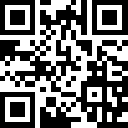2020年初級商務英語閱讀材料四
Social Media, the Modern Day Radio of Music
Jenna Strauss
Lil Nas X’s “Old Town Road,” featuring Billy Ray Cyrus, continues to rule the Billboard Hot 100 for a record breaking 17th week, dismantling the record for the most time tallied at No. 1 in the chart’s six-decade history. The “Old Town Road” outpaced Luis Fonsi and Daddy Yankee’s “Despacito”, featuring Justin Bieber, and Mariah Carey and Boyz II Men’s “One Sweet Day”, which spent 16 weeks at No. 1 on the Hot 100 in 2017 and 1995-96, respectively. What is even more spectacular than the success of Lil Nas X’s debut record is how it initially gained its traction. The record went viral on TikTok, one of the most popular and most interesting social media apps on the planet, which recently hit one billion downloads across Android and iOS.考生如果怕自己錯過考試報名時間和考試時間的話,可以 免費預約短信提醒,屆時會以短信的方式提醒大家報名和考試時間。
The success of “Old Town Road” hasn’t just blurred lines in musical genres, but is reshaping the way artists, labels, and marketing executives think about social media and its place in the life cycle of breaking a hit record. As the reach and scale of social media has allowed artists to tap into a global audience, marketing a record in today’s landscape requires executives and management teams to think from a digital first lense. This mindset has become even more critical, as major social media platforms continue to drive music discovery.
Consider the lifecycle of artist discovery from the pre-social media age to today. Prior to social, music was discovered pertinently through radio, which due to the difficulty of distribution, labels almost outright controlled. The linear path to breaking a record was clearer when the consumption platforms were less saturated with user generated content and when there were just less platforms overall one could actually pay attention too. Fast forward to today, and social media has opened up a direct to fan communication platform, which has resulted in artists viding for fans’ social currency. Why? The lifecycle of an artist to reaching the gen Z and millennial fan requires the use of social media, from the most popular platform in the world Facebook to emerging platforms like TikTok.
For instance, in a recent report from Music Watch, the research firm found that 9 out of 10 social media users do a music-related activity within the framework of an app. More specifically, the report found that Instagram leads the way, with 56 percent of users following, sharing or tagging musicians; Twitter comes next, with 51 percent; and Facebook has 44 percent of respondents liking a musician or artist – a number that rises to 47 percent among daily users. Among Snapchat users, 68 percent viewed or posted photos from live music events, while 23 percent captioned their posts with song lyrics.
With that in mind, every artist campaign needs to focus on not only creative content that puts an act above the cat in your Instagram feed, but also how this content can be easily shared. Sharing to earn social currency, is the most direct path to building a hit record in today’s music discovery ecosystem. Is your single or album release ready?
環球網校友情提示:以上內容是2020年初級商務英語閱讀材料四,點擊下面按鈕免費下載更多精品備考資料。
最新資訊
- 2022年11月BEC商務英語考試口語常見詞匯:社會保障2022-08-30
- 2022年11月BEC商務英語考試口語常見詞匯:房地產調控2022-08-28
- 2022年11月BEC商務英語考試口語常見詞匯:面會時間2022-08-27
- 2022年11月BEC商務英語考試口語常見詞匯:起訴2022-08-21
- 2022年11月BEC商務英語考試口語常見詞匯:狂熱流行2022-08-20
- 2022年11月BEC商務英語考試口語常見詞匯:富二代窮二代2022-08-14
- 2022年11月BEC商務英語考試口語常見詞匯:外掛程序2022-08-13
- 2022年11月BEC商務英語考試口語常見詞匯:現場招聘2022-08-08
- 2022年11月BEC商務英語考試口語常見詞匯:超級網銀2022-08-07
- 2022年11月BEC商務英語考試口語常見詞匯:假日出游2022-08-06
 打卡人數
打卡人數


